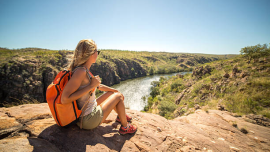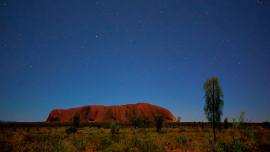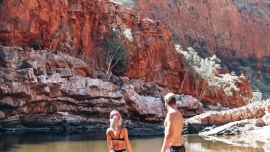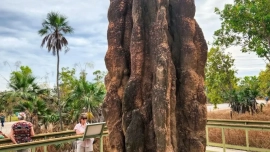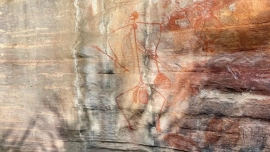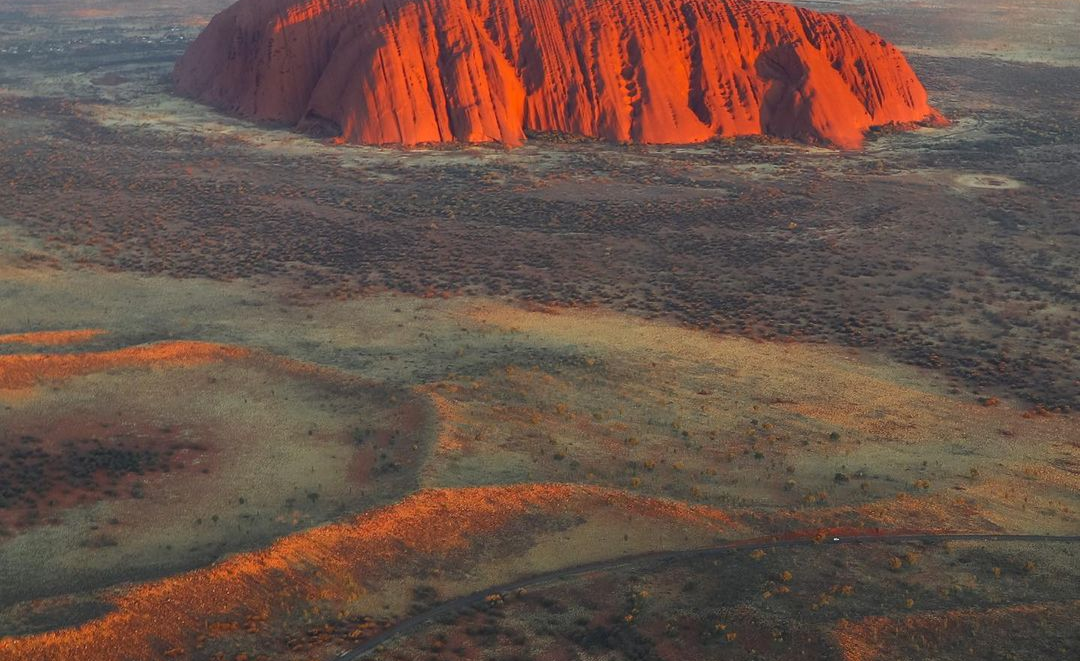
Discover Uluru: Your Complete Travel Guide to Australia’s Iconic Red Centre
If you’re wondering how to embark on an Uluru tour and witness the magnificent natural beauty of central Australia, look no further. Uluru, also known as Ayers Rock, is a massive sandstone monolith standing tall amidst the flat plains of the Northern Territory’s Red Centre. This sacred site is not only a geological wonder but also a significant cultural landmark for the Indigenous Anangu people. Traveling to Uluru is a journey into ancient traditions and breathtaking landscapes. In this article, we’ll explore the various ways you can reach Uluru, delve into the best times to visit, and ensure you’re prepared for an adventure of a lifetime.
Understanding Uluru’s Significance

Uluru is much more than a tourist attraction; it’s a spiritual and cultural treasure. The Anangu people have been the custodians of this land for tens of thousands of years and regard Uluru as a central part of their creation myths and religious practices. Visitors are invited to not only witness the stunning views but to also learn about the complex tapestry of laws, knowledge, and survival skills that have been passed down through generations. Due to its significance, travelers should approach visits with respect and sensitivity to Anangu traditions and the delicate desert ecosystem.
Planning Your Trip to Uluru
Best Time to Visit
Deciding when to take your Uluru tour is key for an enjoyable experience. The best times to visit are during the cooler months, from May to September, when the climate is more temperate. Days are warm and sunny while nights can be quite chilly, so packing layers is important. Visiting during these months also means avoiding the intense heat that arrives in the Australian summer, potentially affecting your ability to comfortably explore the area.
What to Pack
Considering Uluru’s unique environment, packing appropriately is crucial for your comfort and safety. It’s recommended to have light, breathable clothing for the daytime and warmer layers for the unpredictable desert evenings. A sun hat, sunscreen, and sunglasses are essential to protect you from the strong Australian sun. Don’t forget a durable pair of walking shoes, as many of the best vistas involve some light hiking. Also, include a sturdy water bottle – staying hydrated is paramount in the arid Outback.
Transportation Options to Uluru
Flying to Uluru
The quickest way into the heart of Australia’s Red Centre is by flying. Ayers Rock Airport (Connellan Airport) is the nearest terminal situated just a short distance from Uluru itself. Qantas and Virgin Australia offer flights from major cities like Sydney, Melbourne, and Brisbane. Upon arrival, travelers can transfer to their accommodations via the available shuttle services, taxis, or by renting a car for greater flexibility.
Driving to Uluru
For those who prefer a road trip, driving to Uluru presents an unforgettable adventure. The drive from Alice Springs to Uluru is about 450 km, taking approximately 4.5 hours. Rental cars are available in Alice Springs, and the journey is a single, well-maintained highway straight to the park. Along the way, you can enjoy breathtaking views and the wide expanse of the Australian Outback. Remember to check your vehicle’s insurance policy and fuel up whenever possible as services are limited.
Taking a Tour or Shuttle
Many visitors opt for an organized Uluru tour to alleviate the stress of planning and to gain enlightening cultural insights. Tours and shuttles often include guide services, transportation, and sometimes meals and accommodations. This can be an excellent choice for those interested in learning more about the area’s historical and cultural significance while enjoying a structured itinerary.
Accommodations and Staying Nearby Uluru
Luxury to Budget Stays
There are various accommodation options available for your Uluru tour depending on your budget and preferences. High-end hotels offer luxurious amenities and unparalleled views of the rock formation, while budget lodgings provide a comfortable stay without the extra frills. The important factor here is booking in advance, particularly during high season, to secure your preferred type of accommodation.
Camping Sites
If immersing yourself in nature is your idea of the perfect Uluru experience, camping might be the option for you. There are several designated camping sites equipped with necessary amenities such as showers, cooking areas, and waste disposal facilities. It’s a unique way to experience the starry nights of the desert and the sounds of the outback at dusk and dawn. Here is a table of popular camping grounds near Uluru:
| Campsite Name | Distance to Uluru | Amenities |
|---|---|---|
| Ayers Rock Campground | 15 km | Showers, BBQ, Pool |
| Curtin Springs | 100 km | Basic facilities, Pet-friendly |
What to Do Once You Arrive at Uluru
Tourist Activities and Experiences
Once you’re at Uluru, the adventure truly begins. Engage in a variety of activities, such as guided walking tours around the base of the monolith, taking part in cultural workshops, or biking the designated paths. For an unparalleled view, consider a scenic flight or skydiving for the thrill-seekers. One must-not-miss experience is the ‘Field of Light’, an art installation that illuminates the desert with thousands of solar-powered lights at dusk.
Cultural Exploration and Etiquette
Embarking on an Uluru tour is also about cultural learning. Visitors are encouraged to partake in cultural centers and guided tours that explain the Anangu laws and customs. It’s vital to follow the guidelines set by the local Indigenous community, such as not climbing Uluru and respecting restricted photography sites. This understanding fosters a more enriching and respectful visit.
Tips for a Sustainable and Respectful Visit
When you embark on a journey to Uluru, commitment to sustainability and respect should be at the forefront. It’s our collective responsibility to minimize our environmental footprint and respect the cultural practices attached to this sacred site. Stick to marked pathways to preserve the local flora and fauna, carry out all trash, and choose eco-friendly options whenever possible. Being a considerate visitor ensures that Uluru can be cherished by future generations.
In conclusion, a trip to Uluru is a soul-stirring expedition that connects travelers to the ancient heartbeat of Australia. Through careful planning, adherence to ethical travel practices, and a spirit of respect and wonder, your Uluru tour can result in lifetime memories carved from the very sandstone of this legendary monolith. May your journey be safe, enlightening, and filled with the awe-inspiring spirit of the Red Centre.
FAQs About Traveling to Uluru
-
What is the quickest way to reach Uluru?
The fastest route to Uluru is by flying directly to Ayers Rock Airport and taking a short shuttle ride to your nearby accommodation.
-
Are there entry fees for the Uluru-Kata Tjuta National Park?
Yes, visitors are required to pay an entry fee for the park. Always check the latest fee schedule on the national park’s official website before your trip.
-
Can you climb Uluru?
No, out of respect for local Anangu customs and to protect the environment, climbing Uluru is prohibited since October 26, 2019.
-
What should be on my packing list for a trip to Uluru?
Your packing list should include comfortable clothing suitable for warm days and cool evenings, a sun hat, high-SPF sunscreen, reliable walking shoes, a reusable water bottle, and your camera to capture the beauty of Uluru.
-
Is it possible to visit Uluru on a budget?
Yes, budget-friendly options include camping, cooking your own meals, and booking travel and accommodations well in advance, especially during off-peak periods.

